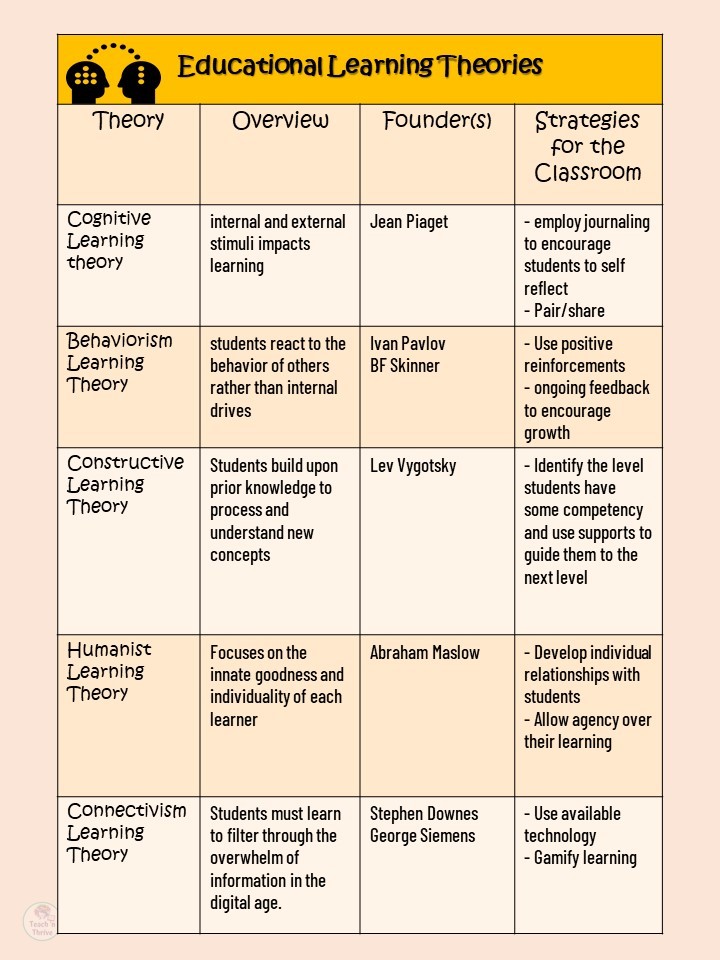
What Are The Top 5 Learning Theories Every Teacher Should Know
28th April 2025
Before you plan your next lesson, ask this: 'Do I really understand how my students learn?' Some pick up facts instantly, others need visual aids, some thrive in group settings while others prefer working independently.
The secret lies in understanding learning theories in education- the frameworks that explain how students take in and process information.
They help you move beyond guesswork to evidence-based teaching. You get insights into student behavior, design better lessons, and create environments where everyone can succeed.
5 Key Learning Theories Every Educator Must Know
These are not just academic concepts - they are practical tools that help you connect with every student in your classroom:
1. Behaviorism
Think of it as learning through conditioning and reinforcement. When students receive positive feedback after doing something correctly, they are more likely to repeat that behavior. Likewise, negative consequences discourage unwanted behaviors.
In your class:
- Use small rewards like stickers or kind words to encourage good behavior.
- Use repetition and practice drills to strengthen facts and rules.
- Establish clear classroom guidelines with consistent enforcement.
Behaviorism works especially well with younger students who respond to immediate feedback. It provides structure and clear expectations, making classroom management more straightforward.
However, this approach often overlooks thinking processes and emotional factors. It focuses on the 'what' of behavior rather than the 'why' behind it.

https://teachnthrive.com/
2. Cognitivism
While behaviorism examines external actions, cognitivism looks at what happens inside the mind. This idea says people learn best by doing things and thinking about what they have done. The brain processes information like a computer, organizing new knowledge into patterns and frameworks that help you make sense of the world.
In your class:
- Create visual organizers like mind maps to connect concepts.
- Break complex topics into manageable chunks.
- Allow quiet reflection time for processing new information.
- Use varied approaches to present the same material.
Also, cognitivism helps students understand underlying principles rather than just memorizing facts. It builds deeper comprehension and better retention.
Research shows students remember nearly 60% more when lessons are broken into smaller segments and presented in different formats. This prevents cognitive overload and gives the brain time to process information.
3. Constructivism
Have you ever learned something better by figuring it out yourself? That is constructivism at work. This theory suggests that people build their own understanding through experiences and reflection. Know that knowledge is not simply transferred from teacher to student. It is actively built by each learner as they interact with their environment and think about what they are experiencing.
Therefore, in your class:
- Design hands-on projects and experiments.
- Encourage problem-solving without immediately providing answers.
- Build discussion that allows students to share different perspectives.
- Connect learning to real-world situations.
This theory promotes deeper understanding, produces critical thinking skills, and helps students become self-directed learners.
Educational experts agree that active, hands-on learning is one of the best ways to develop skills needed in today's fast-changing world.
4. Humanism
Learning is not just an intellectual process- it is deeply emotional too. Humanism believes students learn better when they feel safe, happy, and understood. This approach emphasizes personal growth, self-direction, and creating a supportive environment where students feel valued and respected.
So, in your class:
- Let students set personal learning goals.
- Create a classroom atmosphere of trust and acceptance.
- Address emotional well-being alongside academic progress.
- Recognize individual differences and learning styles.
Humanistic approaches build motivation, form positive attitudes toward learning, and help students develop self-awareness.
Studies show that emotional well-being can improve academic performance by about 11% on average. When students feel safe and supported, their brains are better prepared for learning.
5. Connectivism
Learning happens not just within individuals but through connections with networks of information and people. Knowledge exists across various sources, and learning means knowing how to access and process that information.
In your class:
- Use digital platforms for collaboration.
- Teach research skills for finding and evaluating online information.
- Encourage students to build personal learning networks.
- Add videos, websites, and social platforms to support learning.
Connectivism prepares students for a world where information is constantly changing and growing. It develops digital literacy, research skills, and the ability to learn continuously.
Research indicates students in collaborative digital environments often perform up to 20% better than those in traditional lecture-based classrooms.
Bottom Line
Educators who pursued an M.Ed. in Teaching understand that mastering these learning theories can make a huge difference — for you and your students. Instead of simply delivering information, you become a designer of learning experiences, a guide through complex ideas, and a supporter of each student's unique learning journey.
Written By : Ruchi Mehta




